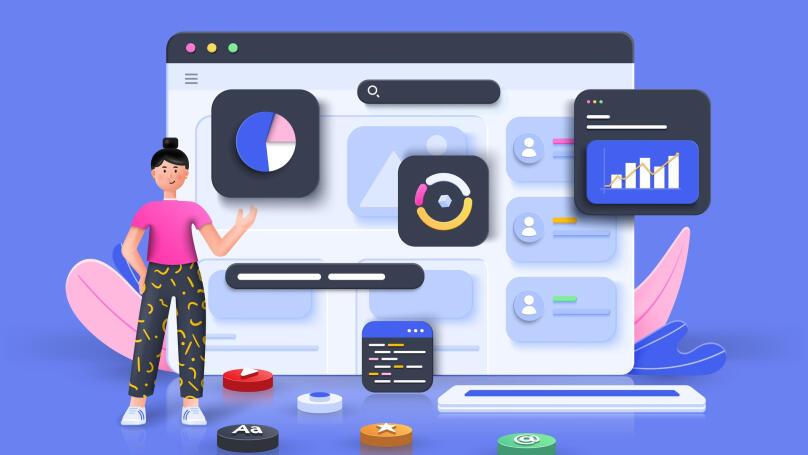How businesses can create “evergreen” content for their website and social media: new research
Evergreen content is always popular, not tied to a specific news story or date, and is, therefore, interesting at any given time.

According to the analysis conducted by the "BuzzSumo" service and the "Backlinko blog," the content follows the same pattern. Sources analyzed 3.6 billion pages of evergreen content and shared the study's results.
What you need to know about evergreen content

Evergreen content is not about SEO
SEO-optimization of a website is responsible for how its pages are considered by search engines. Which is mostly about keywords in articles, captions for pictures, and routine work using the site code. On the other hand, Evergreen content represents articles you can return to after some time, such as analysis, guides, and instructions. They are important regardless of today's info trends and can continually attract traffic. However, keywords can be "embedded" into an "evergreen article" because one completely overlaps the other.
Evergreen content is almost free to promote
Why? Because it provides a webpage with high rankings in the search as it has a "huge amount" of keywords and obvious advantages. It may also contain several cross-platform links to materials from other sites or articles from the same website, all of which will increase the audience's reach. In addition, evergreen content is actively reposted on social media to attract the target audience's attention for free. Although you will have to be patient: you must not expect instant results from evergreen content; however, they will have long-term and stable results.
The most popular version of an evergreen article is a list or a step-by-step guide
"The top 10", "5 Products", "3 websites", etc., are the most popular evergreen article formats. In the second place, you will find articles with step-by-step instructions using a "How to do" format. Articles that describe an object or fact ("What is it?") or answer the question "why?" in various guises are also extremely popular. Finally, the titles of the most-viewed articles contain the words "guide," "best," "report," "research," "facts," and "data." Interestingly, reviews, podcasts", infographics, presentations, press releases, and interviews do not receive as many views as lists or "how to do."
Normally, "evergreen" topics are about marketing
Frequently "evergreen" topics are about marketing in different forms, health, our environment, technology, travel, beauty, social media, fashion, and finance. Publishing, retail, and electrical engineering are at the bottom of the popularity ratings. However, a topic can revitalize even a not-so-evergreen format, be it a podcast or an infographic, mainly showing interest in the first few days after it has been released. In addition, video podcasts are increasingly becoming an evergreen content format, according to analysts with knowledge of the study. However, they are primarily based on the personal brands of hosts or guests. In Lectera's content marketing course, you will find out more about all the different formats and be able to generate at least one hundred quality ideas.
How do you make your content evergreen?

You can rewrite the material, leaving it at the same address (without changing the URL.) For example, you can update a particular study annually by creating a new title and page description. You can do the same with market analysis or fairly outdated information. This is a popular approach; many Western businesses adhere to it.
You can add the latest information to the materials. If it is important to keep the text with the links, you can add additional information and links to it. You can also change the title and SEO description of the page - to attract new audience sections, but do not lose those who continue to follow cross-platform links and old SEO text settings. The URL, incidentally, will still be the same. This is because search engines normally respond to content changes under the same URL.
How to create evergreen social media content
Take a look at the topics you have written about. For example, "Magic pills work great: how to lose weight while lying on the couch," "Get six-pack abs in three minutes a month," Become a millionaire in an evening," etc. The same guides and information will work; for social media, you can also create a more simplified version of articles from your website, presenting them in the form of cards or short posts with the main points. Recipes work well, as do new versions of old posts, including small additions. Unfortunately, users consume too much information to remember what they read two weeks ago. We still remember yesterday's posts, although the day before yesterday, we seem to forget. This can and should be used to your advantage: if the article is not tied to a date and infomercial, you can take it to the top and promote it as much as you want. However, be considerate to your audience: for its limited sections, it is reasonable to pause and not offer the same post several times a day.
Distributing evergreen content on VKontakte, Odnoklassniki, Facebook, and Reddit is most advantageous. However, according to the report, Twitter was the least suitable place to post evergreen content.
Lectera’s Online Courses by topic
How do you know that your content has become "evergreen?"
Through using metrics. You can measure how long a user stays on your website, the number of jumps (a user enters a website and closes it after 15 seconds), and conversion rates (the number of times the user takes a targeted action, such as subscribing to a newsletter or switching to another article). The reading to the end of the text and traffic dynamics are also important – when a user visits, the website does not get any new views. If an article has not been read to at least the third paragraph, it will not become "evergreen." Try to change the article or its presentation format: break the piece into subheadings and create smaller sections.
Experiment, create different text methods, study the audience's response, and change your approach to publishing. However, until you work on your new idea, your "evergreen" content will not go viral on social media.
Share this with your friends via:
Latest News

A significant stage in the development of the alternative education system has begun in West Northamptonshire in the UK: the County Council is actively calling on parents, guardians, and trustees to participate in shaping the future of this key area.

Outwoods Primary School in Atherstone, Warwickshire, having experienced deep sadness after the loss of their famous cat, Silla, has found solace in a new pet – a Maine Coon named Aloysius O’Hara.

In modern universities, artificial intelligence, and in particular ChatGPT, is rapidly transforming from a controversial tool into a full-fledged student assistant.

An innovative educational project is gaining momentum in UK primary schools, aiming to change attitudes towards video games.

The Massachusetts Institute of Technology (MIT) presents MIT Learn – a revolutionary online platform that opens a “new front door” to access university knowledge and resources.












 Test. How Should You Spend the Winter Holidays?
Test. How Should You Spend the Winter Holidays?
 How the Christmas Tree Became the Symbol of the New Year: From Pagan Groves to Sparkling Ornaments
How the Christmas Tree Became the Symbol of the New Year: From Pagan Groves to Sparkling Ornaments
 How to Keep New Year’s Resolutions: A Detailed Guide to Real Change
How to Keep New Year’s Resolutions: A Detailed Guide to Real Change
 Test. What Winter Dessert Are You?
Test. What Winter Dessert Are You?
 Test: What Kind of Ancient Goddess Are You?
Test: What Kind of Ancient Goddess Are You?
 Test: Which Great Woman Would Invite You for Tea?
Test: Which Great Woman Would Invite You for Tea?
